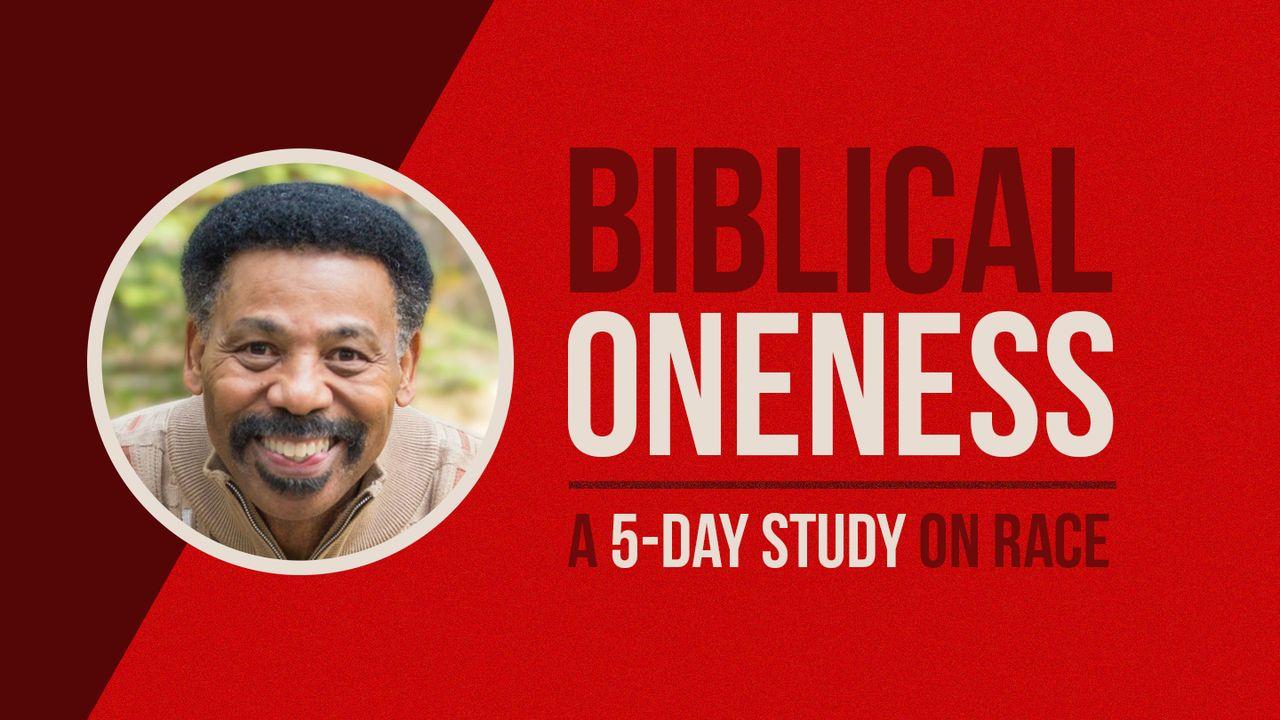Biblical Oneness: A Five-Day Devotional on RaceSample

Social Leads to Spiritual
The Samaritan woman saw that while Jesus looked Jewish, talked Jewish, and dressed Jewish, He didn’t act entirely Jewish because He was willing to do something no other Jew was willing to do—put His lips to her cup. Please note that this was a tangible, public, and social action on His part. In other words, He wasn’t just standing far off saying, “Samaritan woman, you must be born again.” Rather, Jesus was willing to engage her socially. Jesus did not ignore her humanity to save her soul. This has been one of the great sins of American Christianity.
One of the greatest hindrances to authentic oneness in the body of Christ today is our unwillingness to engage each other socially. Granted, we have made efforts in the church and society to develop multiracial staff in our ministries, or to link up for special events, but the question is still often posed, or often thought if not stated, “Why do all the black staff members spend their breaktime together?” or “Why do all the whites sit in groups?” Rarely do we witness a natural merging of the races unless it has been forced; however, when it is forced, it cannot be authentic simply due to the nature of oneness. We have misunderstood oneness to mean a denial of racial distinctions. This has left us with the result of forcing oneness rather than actualizing it. This creates polarization and fragmentation since forced oneness can only come as a result of one group imposing its definition of unity on the other rather than an embracing of individuality together toward the pursuance of a common goal.
Jesus understood the value of time, attention, and embracing the other. By engaging the Samaritan woman socially, He brought the opportunity for an even deeper discussion as we read in John 4:10: “Jesus answered and said to her, ‘If you knew the gift of God, and who it is who says to you, “Give Me a drink,” you would have asked Him, and He would have given you living water.’”
One of the things I love most about Jesus is that He could turn anything into an illustration. What He did is take the simple conversation about a drink and turn it into an evangelistic opportunity. He was able to do this because He was not only willing to spend time with her, but also to drink from her cup. In His willingness to drink from her cup, He gained an opportunity to witness to her soul. Don’t miss that. If He had not been willing to engage her socially, He may not have had the opportunity to talk to her spiritually.
A lot of times we want to get people to heaven whom we are not willing to relate to on earth. We want to get people to glory whom we are not willing to even talk to in history. But what Jesus did was use the natural cross-cultural opportunity of common ground—Jacob’s well and His need for a drink—to present a message of life to this lady. Through this, Jesus initiated true biblical oneness.
The second principle for biblical oneness is that Jesus refused to allow culture to interfere with His higher priority of representing God’s truth.
Scripture
About this Plan

Racial unity can be elusive. As a black man who’s also a leader in white evangelicalism, Dr. Tony Evans understands how hard it can be to bring these worlds together. Yet he’s convinced that the gospel provides a way for Christians to find oneness despite the things that divide us. Dr. Evans shows us God's heart for racial unity by examining the story of Jesus and the Samaritan woman.
More









